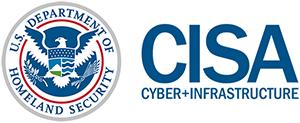In 2019, the United Nations Office for Disaster Risk Reduction’s (UNDRR) Global Assessment Report called on countries to abandon “hazard-by-hazard” risk management, in favour of a holistic approach that examines risk in the context of its impact in systems, including cascading impacts.
A year later, the COVID-19 pandemic presented the world with an unfortunate case study of how systemic risk, if left untreated, can snowball into a disaster and a global crisis.
However, the pandemic was not the only disaster of the year, as 2020 saw countries in Asia-Pacific deal with a perfect storm of dual and multiple disasters, including droughts, floods and typhoons.
For countries in the region to guard against future disasters and mitigate the compounded impact of disasters, a fundamental shift in risk governance at national and local levels is required.
The post-COVID recovery process is one avenue to embed this new approach in socio-economic development processes, to avoid the creation of new risks while risk-proofing development gains.
However, some preconditions need to be met to facilitate this transformation, including committed leadership, investments, engagement of all sectors and stakeholders, and an embrace of science-based multi-hazard risk reduction. All of these elements are in line with the commitments that countries made in the adoption of the Sendai Framework for Disaster Risk Reduction 2015-2030.
The 2021 Asia-Pacific Ministerial Conference for Disaster Risk Reduction (APMCDRR), as the first major UNDRR regional platform since the onset of COVID-19, offers countries and stakeholders an opportunity to determine how these conditions can be met to achieve a transformation in risk governance.
With that goal, UNDRR and Australian Government, as the convener and host of the APMCDRR respectively, completed this week a major step in the roadmap to the ministerial conference, the organizing of the Asia-Pacific Partnership for Disaster Risk Reduction (APP-DRR) Forum.
The APP-DRR was organized on 1-2 December as a virtual meeting with 175 participants from 30 Asia-Pacific governments, over 10 intergovernmental organisations, several UN and international organizations, and stakeholder groups.
The Forum was kicked off with a statement by Ms. Mami Mizutori, Special Representative of the UN Secretary-General for Disaster Risk Reduction, who exhorted the participants to “think big and out of the box”. Opening remarks were made by the Australian Government:
"This forum is an important opportunity to take stock of how we're progressing against our Sendai commitments and to work together to accelerate this process," said Ms. Rebecca Bryant, Assistant Secretary at the Australian Department of Foreign Affairs and Trade, adding:
"Australia is firmly committed to working with countries to further enhance our region's resilience to disasters and to learn from each other's experience."
Of importance to the APMCDRR is building the disaster resilience of small island developing states in the Pacific. These countries are often the most vulnerable countries to extreme weather events, and still have to mobilize resources to counter a global pandemic.
Speaking on both aspects, the Honorable Dr. Ifereimi Waqainabete, Minister of Health and Medical Services in Fiji, said:
“Our coordinates cannot change... we need to understand as a nation that we are prone to disasters. We are prone to cyclones, droughts and other extreme weather events, almost every year,” emphasizing that “as leaders in our own right, we must continue to make better decisions in building resilience to ensure that the devastating impacts of disasters are mitigated and reduced.”
To make the right decisions, countries need to strengthen their data collection systems and understanding of risk, which in turn contributes to the development of sound national and local disaster risk reduction strategies.
On that front, UNDRR noted that the region was making progress in reporting on several Sendai Framework indicators, as 67% of countries in Asia-Pacific have reported some data as of October 2020.
However, challenges remain around the collection of data that is disaggregated by sex, age and disability, which hinders the effectiveness of planning to ensure no one is left behind.
Moreover, countries continue to face challenges in adopting integrated approaches that combine climate change adaptation with disaster risk reduction and expanding their risk governance mechanisms to other sectors.
As the availability of funding is often a hindrance to the implementation of risk reduction strategies, UNDRR presented recommendations on how countries could finance risk prevention.
Green investment offers a particularly effective way to fund climate change adaptation and risk reduction measures, as is highlighted in a report that was launched by UNDRR at the APP-DRR, titled ‘Ecosystem-Based Disaster Risk Reduction: Implementing Nature-based Solutions for Resilience.’
However, as a result of the downturn in economic activity caused by the COVID-19 crisis, it might be necessary for governments to increase their support for green investments as part of their recovery efforts.
“Financially constrained firms have weaker environmental performance and COVID-19 could be detrimental to environmental investments. Going forward, there will be a need for some forms of public support to encourage green recovery,” said Dr. Hiroko Oura from the International Monetary Fund.
The APP-DRR was also an opportunity for countries and stakeholder groups to voice their priorities and concerns. These reflections were posted on the event page and will help inform planning for APMCDRR.



